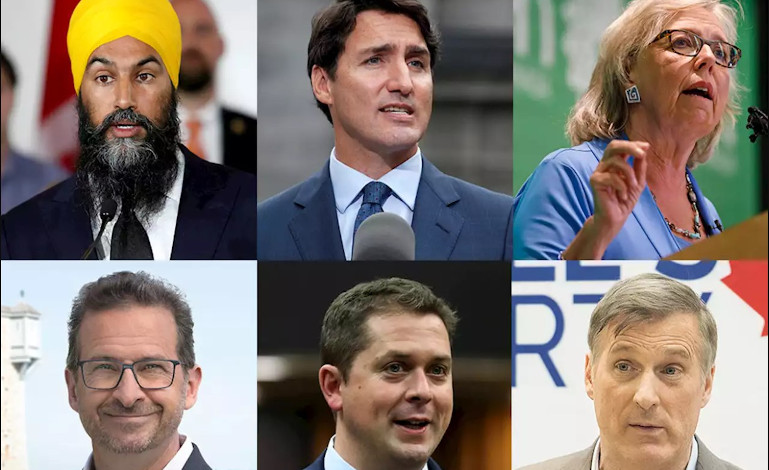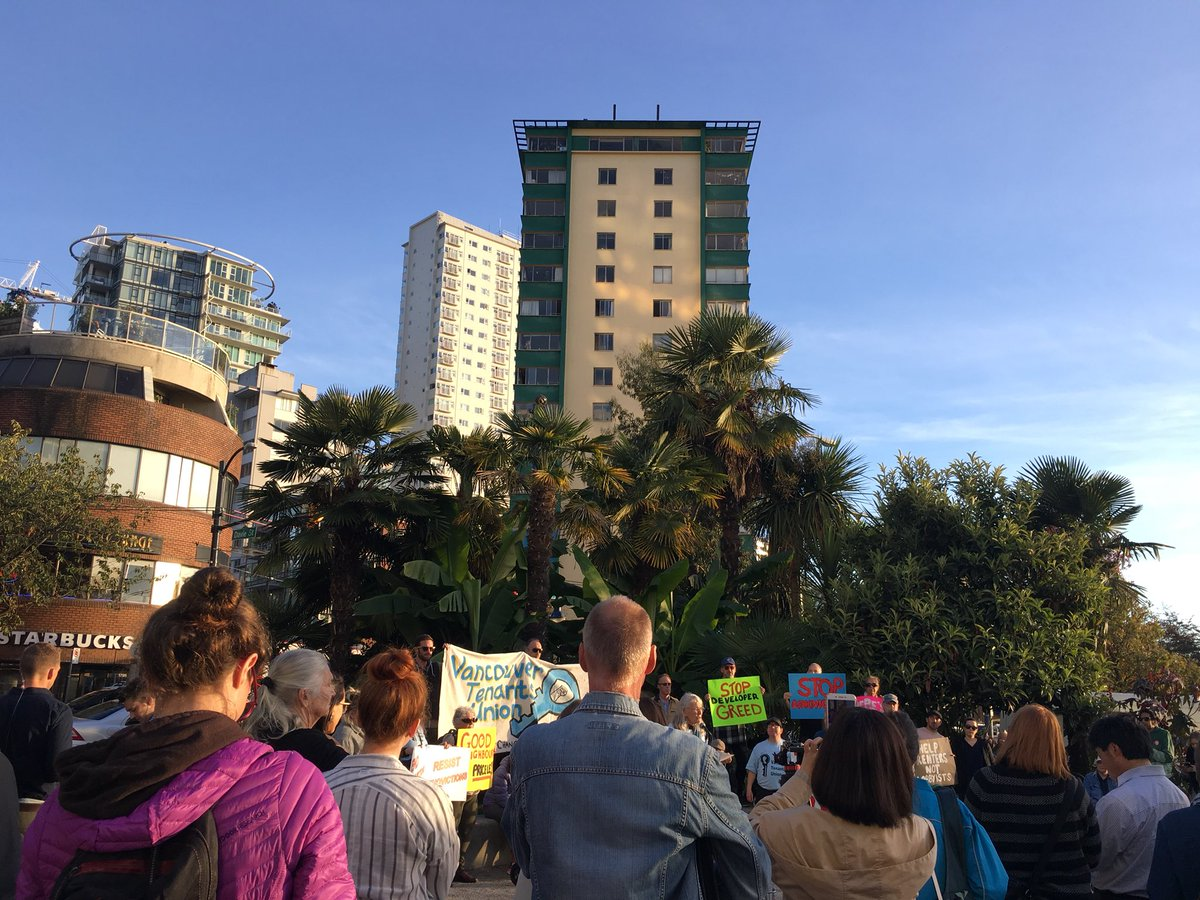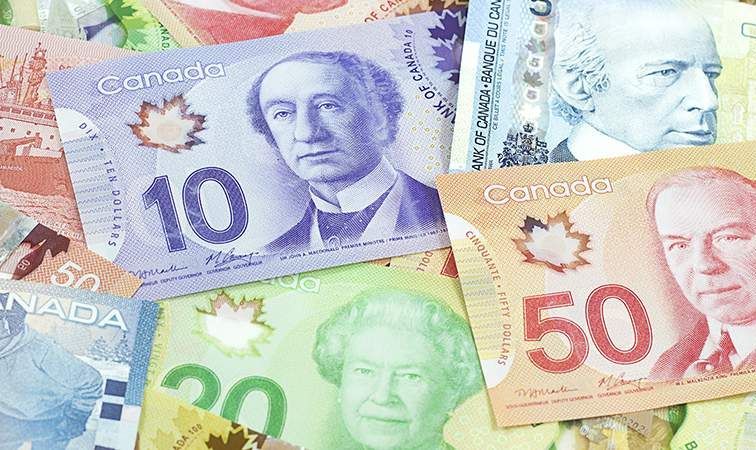Canadians woke up on Tuesday to a parliament vastly different than what we’ve had for the past four years. The new parliament reflects the profound regional differences, an urban/rural divide and diverging visions of Canada’s economy as either primarily resource-based or diversified and “green.” However, the results did not reveal a sharp class divide, although this is a reality that has not yet risen to the surface.
Canada has a minority government and faces political instability. Trudeau will be Prime Minister, but has to negotiate with other parties to govern. The leaders of the two major parties, the Conservative’s Scheer and the Liberal’s Trudeau, are both weakened. The Bloc in Québec, are the winners of the election campaign, going from almost nowhere to 32 seats.
The New Democratic Party (NDP), with its social democratic roots, finished with 24 seats, sharply down from its 44 seats after the 2015 election. The Greens won three seats, up from one seat in the last election, but well below what they hoped to achieve.
It was a largely uninspiring campaign, dominated by negative campaigning from the Liberals and Tories. Both warned how bad the other party would be. The Liberals constantly linked the Tories to Doug Ford’s austerity government in Ontario.
Liberals
The SNC Lavalin scandal in early 2019, which revealed the sordid nature of Liberals working as usual for the corporations, knocked the Liberals from their smug domination of Canadian politics. Their reputation was already damaged by the failure to deliver on election promises such as electoral reform, reconciliation with Indigenous peoples and strong action on climate change.
This, other Liberal scandals and over one million people on the September 27 Earth Strike opened a big space for the NDP and Greens. Both parties had stronger social and environmental platforms than the Liberals.
On election day, the Liberals’ fear-mongering against a Tory government, especially in Ontario, Canada’s largest province, paid off. The popular support for the NDP and Greens prior to voting day did not translate into votes and seats.
The Liberals ended up with 157 seats, short of the 170 needed for a majority, with 33.1% of the popular vote. They lost 29 seats compared to 2015 in every region of Canada, although only losing one seat in Ontario. The Liberals took every seat in Toronto and almost all in the surrounding region.
Conservatives
The Conservatives increased their seats by 23 up to 121. They won more of the popular vote than the Liberals with 34.4%, up less than 3% from 2015. They gained seats across western and Atlantic Canada but lost a seat in Québec and only gained three in Ontario.
To most observers, including Tory supporters, the party underperformed. They were hindered by their wooden leader, Scheer and his narrow focus on mobilizing the party’s existing base. They were harmed by the continuing memory of the deeply disliked Harper government. The hostility in Ontario towards the Conservative’s provincial government led by Doug Ford meant they made no headway. In Québec, the surge of the Bloc blocked the Tories.
The Tories are overwhelming a party of the four western provinces – BC, Alberta, Saskatchewan and Manitoba – with 71 of their 121 seats, 59% of the total, from these four provinces that have just 31% of the population. They won 47 of the 48 seats in Alberta and Saskatchewan, with a lone NDP seat in Edmonton Strathcona.
NDP
The NDP’s leader Jagmeet Singh was generally seen to run a good campaign and polls showed the party was gaining support. However, the NDP started from a very low base, with fears in the summer they would be reduced to between 10 and 15 seats.
With the Tories widely disliked and the Liberals much tarnished, the NDP should have been soaring, yet, only in the last few weeks of the election did the NDP gain ground. The party wasted its historic breakthrough in 2011 when it won 103 seats and was the official opposition. This failure was especially true in Québec, where it won 59 seats in 2011. Historically the NDP has been weak in Québec, in large part because they opposed sovereignty. After the huge 2011 surge, they failed to build a solid base in the local communities. They dropped to only 16 seats in Québec with a total of 44 in Canada in 2015, as the Liberals surged to win a majority in Québec and Canada. In this election they have been reduced to one seat in Québec, often finishing fourth in seats they had previously held.
After the losses in 2015, the party was almost invisible for several years. If, instead, it had built a solid base in Québec and spent the last four years campaigning across the country on bold policies like Bernie Sanders or Corbyn in Britain’s 2017 election it would have been in a strong position to rapidly build support when the SNC Lavalin scandal broke. Its policies include expanding the public healthcare system to include prescription medicines, dental and eye care, taxes on the super-rich and corporations, and making university more affordable.
The huge Earth Strike was an opportunity for the NDP as its policies contrasted with Trudeau buying a pipeline for $4.5 billion and the Tories having no real policies at all. Jagmeet Singh said on climate change action that Trudeau is “Mr. Delay” and Scheer is “Mr. Deny.” The NDP climate policies included ending the annual $3 billion subsidies to the oil and gas companies, expanding public transit and creating 300,000 good jobs as part of a just transition.
Yet when the votes were counted, the NDP had only 24 seats. It gained a seat in each of Atlantic Canada, Manitoba and the North, but these were more than cancelled out by the larger losses in Québec, BC, Saskatchewan and Ontario. Hardly a great success.
Québec and the Bloc
The election in Québec was dominated by the re-emergence of the Bloc Quebecois, with 32 seats and nearly a third of the popular vote. Between 2011 and this election it had been in total disarray. The Bloc was formed in 1991, initially uniting politicians from Conservative, Liberal and a trade union background. Its core principle was Québec nationalism, aiming for sovereignty. In general, the Bloc was progressive, leaning to social democratic views, reflecting the popular sentiment of Québec.
In 1993, the Bloc won the most seats in Québec and until 2011 dominated the province. In that election, it only had 23% of the vote and was reduced to four seats.
The victory of the right-wing Coalition Avenir Québec (CAQ) in Québec on a program of nationalism and identity opened a door to a new form of the Bloc. The high-profile action of the CAQ was the recent introduction of legislation that bans the wearing of religious symbols for many public employees.
The Bloc this time, rather than focus on sovereignty, echoed the CAQ, focusing on Francophone identity and strong Québec nationalism within the Canadian state. Blanchet, the Bloc leader, said on election night the Bloc will work with other parties but Quebec can “have all the attributes of sovereignty.” One of the tensions within the Bloc is that it is aligned with the CAQ, yet Blanchet claimed during the campaign that the Bloc was a progressive party.
Right Populist failure
A good news result was the defeat of Maxime Bernier in Québec. He lost the leadership of the Conservative party, in 2017 by less than 1% to Andrew Scheer. After that defeat, he set up a new xenophobic, populist People’s Party. He lost his own seat, largely because he supports deregulating the dairy and other farming sectors in a strong farming constituency. His party had dismal results across the country, winning less than 2% of total votes. However, at sometime in the future some other version of right populism can gain ground in Canada if there is not a strong left.
Economy
The continuing growth of the Canadian economy helped Trudeau secure a second term as Prime Minister. At the end of 2018 Canada looked to be heading towards recession. Then, over the last nine months there has been further growth in employment and a small up-tick in wages – good news for the Liberals.
However, there are looming clouds on the world economy, with many economists expecting a recession in the near future. Most Canadians are up to their eyes in debt. The housing boom has fuelled much of the recent growth, but there is a large bubble in housing, especially in Toronto and Vancouver, that may yet burst with serious consequences. Much of Canada depends on exporting resources and in a recession, demand for these raw materials will shrink. Canadian workers are highly vulnerable to a world recession.
Divided country
The election has revealed a sharply divided country. The reemergence of the Bloc in Québec shows the nationalist aspirations of many Quebecers is strong.
In western Canada, especially Saskatchewan and Alberta where the Tories had virtually a clean sweep, there is deep alienation. The oil and gas sector has not recovered from the sharp drop in prices in 2014. Alberta’s economy and workers are hurting. They have been told by politicians that a pipeline will solve these problems, although there is no solid evidence in support of the claim. However, the politicians in the province and the federal Tories are feeding a narrative of western victims to boost their support.
The Liberals dominate the urban areas while being weak in western and most of rural Canada. The Tories are mainly a rural party, apart from in the cities of Saskatchewan and Alberta. An economic recession will exacerbate all these tensions.
It is likely that Trudeau will govern as a minority rather than form a coalition. While a minority government will add to the instability, Trudeau has several options for support – from the NDP, the Bloc or even the Conservatives – depending on the issue. None of these parties want an early election. Harper managed five years of minority rule between 2006 and 2011.
Canada has elected 11 minority governments, 9 of them in the last 20 federal elections. Twice, when the NDP held the balance of power, significant reforms were introduced. The first was between 1963 and 1965 when a close working relationship between the Liberals and NDP resulted in the introduction of universal health care, the Canada Pension Plan and the abolition of capital punishment. From 1972 to 1974, when the NDP supported the minority government of the Pierre Trudeau-led Liberals, the NDP successfully demanded the creation of Petro-Canada, a publicly-owned oil corporation. However this was in a different time, when capitalism was willing to grant reforms. Now we are in the age of austerity and counter-reforms.
There is intense speculation on whether the NDP will hold the balance of power, exerting pressure for reforms. While the NDP may be able to use its leverage to push for building some affordable homes, creating a national pharmacare program and capping prices on cell phone service, there are limits to its influence. The NDP will have little leverage on the TransCanada pipeline as both the Conservatives and Liberals support its expansion.
Politics are not only decided in the House of Commons; what happens in the workplaces and streets also matters. A minority government is more susceptible to mass pressure from unions, social and environmental movements, and Indigenous people. If the NDP wants to build its influence and support, it should put much of its energies outside of parliament, taking its popular ideas such as taxing the rich to the streets, workplaces and communities.
A Socialist Alternative
The NDP thinks it can manage capitalism better than the other parties. However, economic crises and ecological disaster are not management failings, they are rooted in capitalism. The looming world recession and the global ecological crises means that managing capitalism is not an adequate answer.
Instead of managing capitalism, if the NDP wants to win, it needs to adopt bold socialist policies that would give hope to workers, including in the resource industries, of good jobs based on a just transition to clean energy paid for by the rich, not workers.
A recent report from Statistics Canada found that Canadian corporations held a staggering $353 billion in tax havens in 2018. This, if taken into public ownership, would fund huge investment in renewable energy, upgrading and insulating homes and buildings, and providing good public transit in cities and between cities and towns – all of which provide good jobs.
Many Canadians are alienated from present society. An Ipsos poll released in September found that 67% of Canadians think the economy is rigged for the rich and powerful and 61% agree that traditional political parties don’t care about people like them. These views can either feed support for right-wing populism or bold socialist ideas. Another study found that 58% of Canadians have a positive view of socialism.
There is an opportunity for a confident and campaigning left-wing party. Socialist Alternative members are working hard to win support for socialist ideas. If you are interested, join us!




